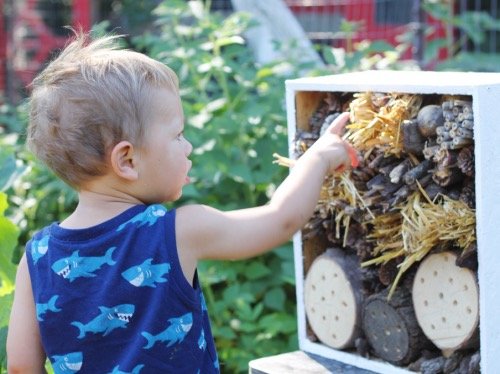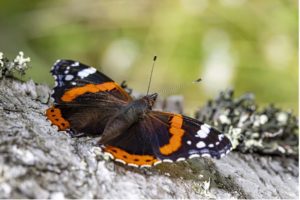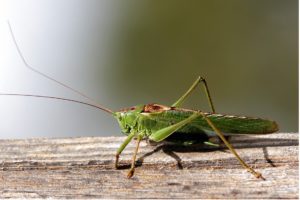
 Ants Undoubtedly one of the smallest yet strongest insect species, ants can live in different habitats, but you can often see them scampering about the woodland in large groups. The Southern wood ant is particularly prominent and is one of the largest ant species, growing up to 10mm in length – queens can be 12mm! Usually brown or yellow in colour, these little workers tend to blend in easily with the forest surroundings while they’re on the hunt for food, so keep your eyes peeled if you’re seeking them out!
Ants Undoubtedly one of the smallest yet strongest insect species, ants can live in different habitats, but you can often see them scampering about the woodland in large groups. The Southern wood ant is particularly prominent and is one of the largest ant species, growing up to 10mm in length – queens can be 12mm! Usually brown or yellow in colour, these little workers tend to blend in easily with the forest surroundings while they’re on the hunt for food, so keep your eyes peeled if you’re seeking them out!
Unlike many other bumblebee species who are usually black and yellow, Red-tailed bumblebees get their name from their large, red tails while their upper bodies are all black. They can grow to be around 2.2cm in length and from early spring to late autumn, you’ll catch glimpses of them buzzing around from flower to flower in the hope of finding some delicious pollen to eat!
 Butterflies
ButterfliesThere’s no doubt about it, butterflies are arguably the most beautiful insects in the UK and it’s not difficult to see why. Whether it’s intricate patterns or vibrant colours, every species seems have something unique on their wings that you can’t help but look at! The Red Admiral butterfly is one you’ll have likely spotted before and boasts a decent wingspan of 6.4cm to 7.8cm. You’ll see these butterflies flutter by most commonly in the summertime and early autumn.
When you think of ‘creepy crawlies’, a centipede is probably one of the first insects to come to mind as having lots of legs, they really do crawl! The common centipede has 15 pairs of legs, is reddish brown in colour and can grow to be around 3cm in length. Unlike some other insects, this species of centipede is a predator, meaning it likes to eat things like slugs, spiders, and worms. However, if you want to get up close and personal with this leggy chap, you’ll have to wait until dark as they tend to hunt at night.
 Grasshoppers
GrasshoppersYou’ll find many species of grasshoppers in the woods, with the Common green grasshopper being the most prominent. These bouncy little guys range from 1.4cm to 2.3cm in size and thrive from April through to September. During mating season, you’ll hear the males rubbing their back legs up against their wings, each one creating a song in the hope of attracting a female. Once a pair have successfully mated, the female will lay her eggs in a soil patch and the nymphs will hatch in the spring of the following year. Have you got any favourite insects you like to hunt for when out and about in the woods? Or perhaps you’ve spotted one of the above? Let us know by getting in touch as we’d love to hear from you!
Copyright © Outdoors Group Ltd 2021. All Rights Reserved.
Registered Office: The Outdoors Group, Western Lodge, Crediton, Devon, EX17 3NH. Company number 10755829
Terms & Conditions / Website Terms / Privacy Policy / Sitemap / Built with ♥ by Solve